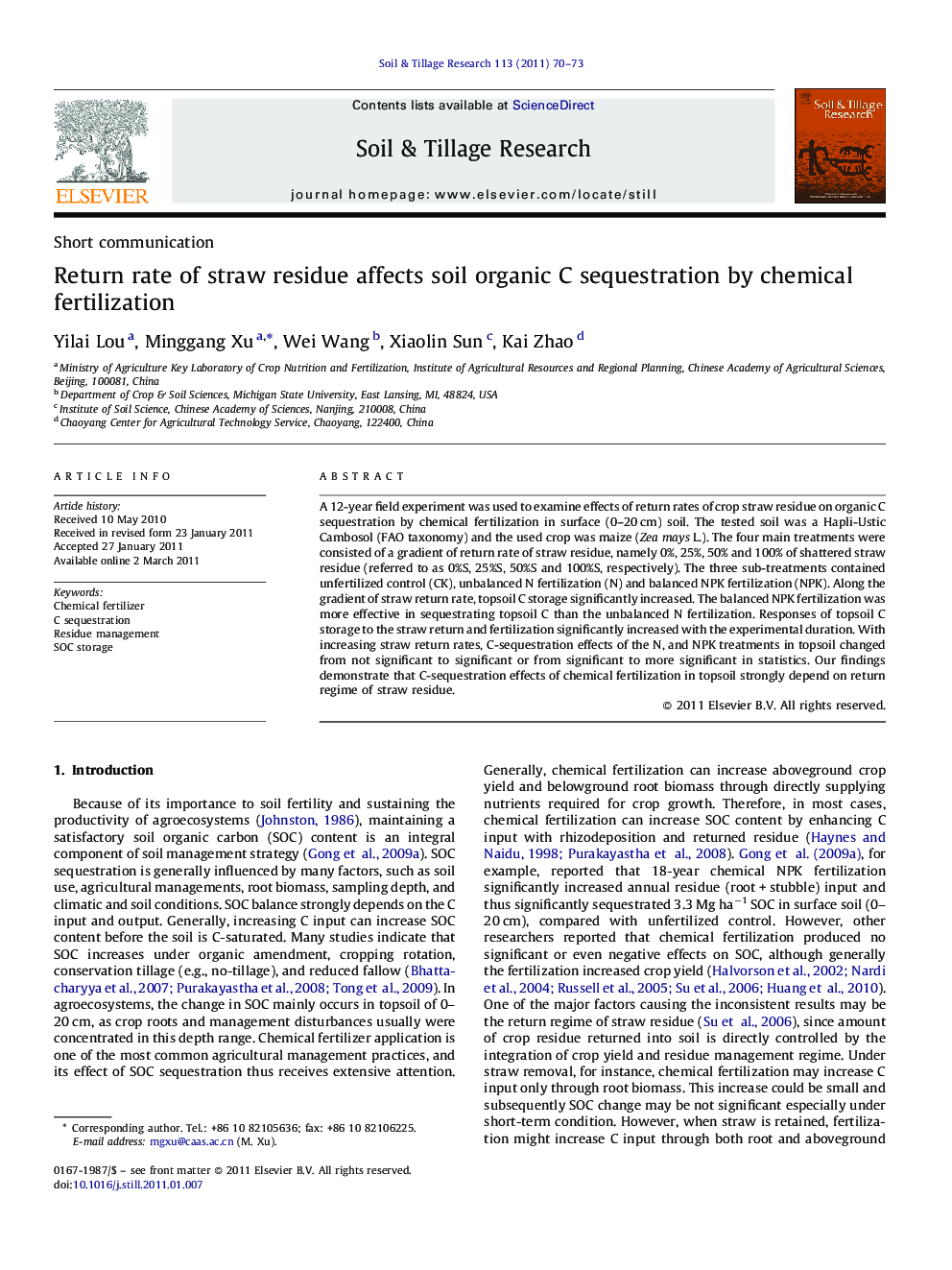| Article ID | Journal | Published Year | Pages | File Type |
|---|---|---|---|---|
| 306104 | Soil and Tillage Research | 2011 | 4 Pages |
A 12-year field experiment was used to examine effects of return rates of crop straw residue on organic C sequestration by chemical fertilization in surface (0–20 cm) soil. The tested soil was a Hapli-Ustic Cambosol (FAO taxonomy) and the used crop was maize (Zea mays L.). The four main treatments were consisted of a gradient of return rate of straw residue, namely 0%, 25%, 50% and 100% of shattered straw residue (referred to as 0%S, 25%S, 50%S and 100%S, respectively). The three sub-treatments contained unfertilized control (CK), unbalanced N fertilization (N) and balanced NPK fertilization (NPK). Along the gradient of straw return rate, topsoil C storage significantly increased. The balanced NPK fertilization was more effective in sequestrating topsoil C than the unbalanced N fertilization. Responses of topsoil C storage to the straw return and fertilization significantly increased with the experimental duration. With increasing straw return rates, C-sequestration effects of the N, and NPK treatments in topsoil changed from not significant to significant or from significant to more significant in statistics. Our findings demonstrate that C-sequestration effects of chemical fertilization in topsoil strongly depend on return regime of straw residue.
Research highlights► C-sequestration effects of the fertilization in the topsoil were dependent on the straw return rates. ► Responses of the topsoil C storage to the straw return and fertilization depended on the experimental duration. ► The NPK fertilization was more effective in sequestrating the topsoil C than the N fertilization. ► C storage in the topsoil was increased with the return rates of straw.
